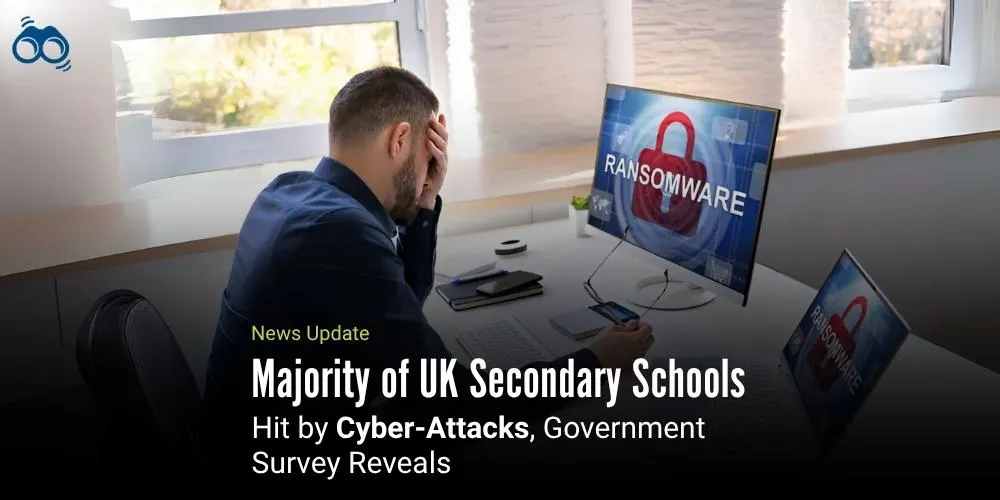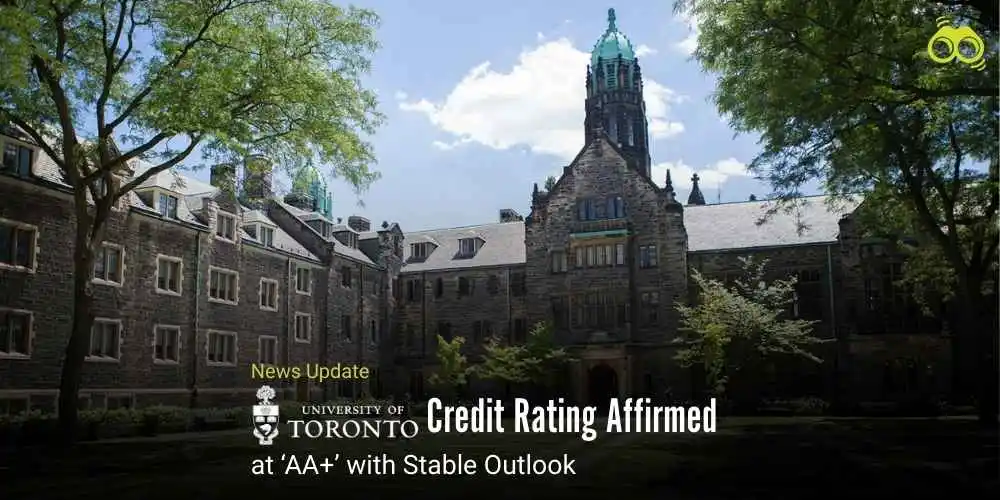Nine in Ten UK Universities Report Cyber Breaches Amid Rising IT Risks
Digital Reliance Leaves UK Educational Institutions Exposed to Hackers
Digitalisation has become an integral part of our modern life, which shapes how to learn, work and communicate. Yet its rapid integration comes up with rising concerns about cyber safety. Overdependency on digital technologies increases the risk of cyber-attacks, indicating that it's high time to balance technological advancement with robust protection measures. Moreover, from secondary schools to universities, digital systems become central to UK education, which further increases the risk of cyber-attacks. While internet access is essential for learning and administration, recent breaches, including nursery data leaks, highlight the urgent need for stronger cyber and IT security across educational institutions.
The survey of annual cybersecurity breaches showed that six in ten UK secondary schools have experienced a cyber-attack or breach over the last year. This proportion increased to eight in ten for further education colleges and nine in ten for higher education institutions. By comparison, just four in ten primary schools and four in ten businesses had reported such incidents. These statistics have raised fresh alarm about IT and cybersecurity within schools and the broader threats to UK college education. Cybersecurity professionals have indicated that such attacks are not necessarily deliberately targeted. Toby Lewis, a senior analyst for a top cybersecurity company, stated that a great number of educational institutions fall into the broader net of opportunistic cybercrime. He added that attackers tend to attack vulnerabilities with no particular motive, leaving secondary education and training institutions highly vulnerable to indiscriminate breaches.
One such case recently was that of Kido, a nursery company, which was said to have been breached after an access broker sold system credentials to a hacking crew. This situation, analysts say, is a typical modus operandi in the world of cybercrime and underscores the increasing threat to information technology security within education. The government's poll, involving almost 300 secondaries and primaries and more than 30 UK universities, broadly defined cyber-attacks. These included phishing emails, which tried to get the recipient to divulge sensitive information like passwords, which were most frequently used against schools and universities.
Ransomware threats are also now a cause for concern. This includes hackers encrypting computer systems and data theft, followed by payment demands, usually via cryptocurrency, to regain access. West Lothian Council's education network was hit this year, with reported data stolen from multiple schools. UK universities Newcastle, Manchester, and Wolverhampton have all had the same kind of breaches in the past few years. Experts have identified that government secondary schools could be more exposed to cyber threats because they have fewer funds and lack specialist IT personnel. In contrast, colleges and universities present special issues such as high volumes of students with differing levels of cyber education and open networks intended to facilitate learning collaboration. They are all major contributors to ongoing education technology threats throughout the sector.
Government statistics also revealed that three in ten institutions of further and higher education experienccyber incidents every week. Although frequent, the education sector seems more active in government-initiated cybersecurity efforts compared to other sectors, such as charities and companies. This indicates that schools and education cyber threats are becoming more aware of the importance of strong cyber safety protocols. Sector leaders have echoed these concerns. Pepe Di’lasio, representing school and college leaders, described ransomware as a major risk and confirmed that significant efforts were underway to protect systems and data. James Bowen, from the National Association of Head Teachers, added that additional government funding would be welcomed to help school leaders identify and respond to cyber threats more effectively.
As a response, the Department for Education said it provides an assigned team to assist schools in the event of cyber attacks. It also collaborates with the National Cyber Security Centre to offer free training for school employees. The spokesperson highlighted the significance of cybersecurity in schools, recognising the disruption caused by such attacks and explaining the scope of support provided. After public outcry, the hackers involved in the Kido breach allegedly erased the stolen information, including kids' profiles. Nevertheless, government sources have confirmed that schools are still a major target. Ministers are now considering a bill to ban schools, the NHS, and town councils from paying ransomware demands, in a bid to prevent future attacks.
Editor’s Note:
Unarguably, digitalisation has brought big changes in education, in making internet connectivity and online systems requirements for education, from learning to management. But this dependency on technology has now posed serious threats involving cyber risks to UK educational institutions, from secondary schools onwards to universities. The nursery data breach is just one of the risks affecting this vulnerable sector. According to government data, a very worrying picture prevails: a high percentage of colleges and universities today are under cyber attack regularly, with phishing and ransomware being among the most common ones. Furthermore, state-funded schools are often understaffed and lack the technical expertise required to sufficiently defend themselves. Open networks compounded by high populations of students are the cake's top.
To combat this increasing threat, educational institutions must put in place a layered approach towards securing cyberspace. This involves putting money into solidifying IT premises against infiltration, carrying out frequent risk assessment and ensuring that employees and learners receive rudimentary cyber awareness training. Well-documented procedures, including plans for public communication, data rescue, etc., in the case of a breach, must also be put in place by school and college management. Most importantly, government support should extend beyond purely reactive measures and provide sustained funding, specialist expertise, and coordination through the entire sector to potentially strengthen cyber resilience across the UK education system. However encouraging government support and training initiatives can seem, the scale and frequency of attacks should tell us that they might not be enough. There is an urgent need for stronger safeguards, better funding, and clearer policies protecting sensitive data and, indeed, students and staff alike.
Skoobuzz asserts that if digital learning is to be a permanent fixture, then cybersecurity must be integrated into our educational framework, not merely our operational procedures.
FAQs
1. How many UK schools have experienced cyber-attacks?
Recent data shows that around 60% of UK secondary schools have faced a cyber-attack or security breach in the past year. The numbers are even higher for colleges and universities, with up to 90% of higher education institutions affected. In comparison, only about 40% of primary schools and businesses have reported similar incidents.
2. Are secondary schools in the UK vulnerable to hackers?
Yes, secondary schools are considered vulnerable. Many rely heavily on digital systems but often lack the funding and specialist staff needed to maintain strong cybersecurity. This makes them easier targets for hackers, especially when basic protections are not in place.
3. How do cyber-attacks affect education in the UK?
Cyber-attacks can cause serious disruption. They may block access to learning materials, damage school networks, or leak sensitive data about students and staff. In some cases, schools have had to delay lessons or shut down systems while recovering from an attack, affecting both teaching and administration.
4. What cybersecurity measures are in place for UK schools?
UK schools receive support from the Department for Education and the National Cyber Security Centre. This includes free training for staff, guidance on safe IT practices, and help during cyber incidents. Some schools also use antivirus software, secure passwords, and regular system checks to stay protected.
5. Are government-funded secondary schools at higher risk of cyber-attacks?
Government secondary schools may face higher risks because they often have limited budgets and fewer technical experts. Without proper investment in cybersecurity, these schools can struggle to keep systems safe, making them more exposed to threats compared to better-resourced institutions.














0 Comments (Please Login To Continue)